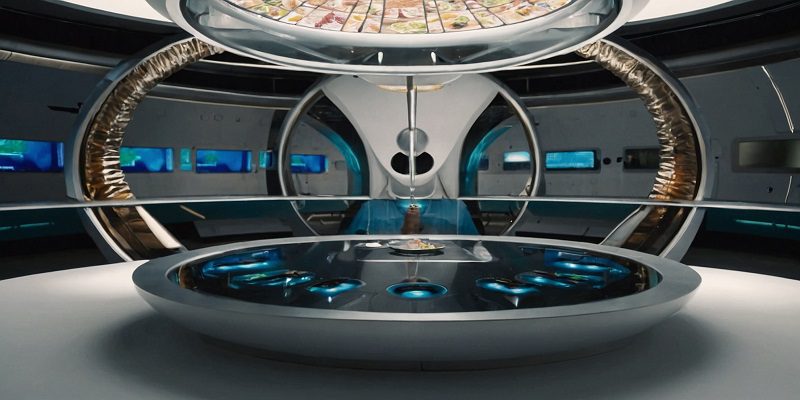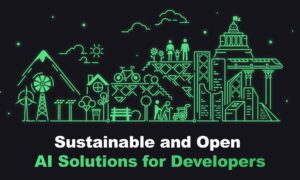In today’s fast-paced world, technology is revolutionizing every aspect of our lives, including how we grow, prepare, and consume food. From advanced farming techniques to cutting-edge restaurant experiences, innovations in technology are shaping the future of food and dining in remarkable ways. Let’s explore ten groundbreaking tech innovations that are leading the charge in transforming the food industry.
Vertical Farming: Growing Up, Not Out
Vertical farming represents a paradigm shift in agriculture, allowing food to be grown in vertically stacked layers, often in urban environments. By utilizing hydroponic or aeroponic systems, vertical farms maximize space efficiency and reduce water usage compared to traditional farming methods. This innovative approach not only addresses the challenge of limited arable land but also offers fresh produce year-round, independent of weather conditions.
Precision Agriculture:
Smart Farming for Sustainable Harvests
Precision agriculture harnesses the power of data analytics, sensors, and automation to optimize farming practices. By collecting and analyzing real-time data on soil health, weather patterns, and crop growth, farmers can make informed decisions to enhance productivity while minimizing resource wastage. From drones monitoring crop health to AI-driven irrigation systems, precision agriculture is revolutionizing farming for a more sustainable future.
Cultured Meat:
Pioneering Protein Production
Cultured meat, also known as lab-grown or cell-based meat, is produced by culturing animal cells in a laboratory environment. This innovative approach holds the promise of providing a sustainable and ethical alternative to traditional animal agriculture. By eliminating the need for raising and slaughtering animals, cultured meat reduces greenhouse gas emissions, conserves water, and eliminates the use of antibiotics and hormones. As technology advances, cultured meat has the potential to revolutionize the way we produce and consume protein.
3D Food Printing:
Culinary Creativity Unleashed
3D food printing allows chefs to create intricate edible designs and customized dishes with precision and efficiency. By extruding layers of food materials, such as purees, pastes, and gels, 3D printers can produce visually stunning culinary creations. Beyond aesthetics, this technology also enables personalized nutrition, catering to specific dietary requirements and preferences. From intricate sugar sculptures to nutritious snacks, 3D food printing is pushing the boundaries of culinary innovation.
Internet of Things (IoT) in Food Safety
The Internet of Things (IoT) is revolutionizing food safety by enabling real-time monitoring and traceability throughout the supply chain. Smart sensors embedded in food packaging can track temperature, humidity, and other environmental factors to ensure optimal storage conditions and prevent spoilage. Blockchain technology further enhances transparency and accountability by creating an immutable record of every transaction and movement within the supply chain. By leveraging IoT solutions, food companies can improve quality control, reduce foodborne illnesses, and enhance consumer trust.
Augmented Reality (AR) Dining Experiences
Augmented reality (AR) is transforming the dining experience by blending the virtual and physical worlds to create immersive culinary adventures. From interactive menus to tableside entertainment, AR technology enhances engagement and entertainment for diners. Restaurants can leverage AR to showcase menu items in 3D, provide virtual tours of farms or vineyards, or even gamify the dining experience with interactive challenges. By integrating AR into their offerings, restaurants can differentiate themselves and delight customers with memorable dining experiences.
Smart Kitchen Appliances:
Cooking Smarter, Not Harder
Smart kitchen appliances leverage connectivity and automation to streamline cooking processes and enhance convenience for home cooks. From smart ovens with built-in cameras for remote monitoring to intelligent refrigerators that suggest recipes based on available ingredients, these appliances are revolutionizing the way we cook and eat at home. By incorporating AI and machine learning algorithms, smart kitchen appliances can adapt to user preferences, optimize energy usage, and even assist with meal planning and grocery shopping.
Blockchain for Food Traceability
Blockchain technology is transforming food traceability by creating a tamper-proof, transparent record of every step in the supply chain, from farm to fork. By digitizing transactions and creating immutable ledgers, blockchain enables stakeholders to trace the journey of food products in real-time, ensuring authenticity and quality control. Consumers can scan QR codes on product packaging to access detailed information about the origin, production methods, and certifications of the food they consume. With blockchain, trust and transparency become the cornerstones of a safer and more sustainable food system.
Indoor Farming:
Bringing Agriculture Indoors
Indoor farming utilizes controlled environments, such as warehouses or shipping containers, to grow crops hydroponically or aeroponically, without soil. By controlling factors such as light, temperature, and humidity, indoor farms can optimize growing conditions and maximize yields year-round. This technology reduces the need for pesticides and herbicides, conserves water, and minimizes transportation costs associated with traditional farming. With the ability to grow fresh produce closer to urban centers, indoor farming holds the potential to revolutionize urban food systems and increase food security.
Food Waste Reduction Technologies
Food waste is a significant challenge facing the global food industry, with billions of tons of food wasted annually at various stages of production, distribution, and consumption. Fortunately, technology is offering innovative solutions to address this issue and minimize waste. From smart packaging that extends shelf life to apps that connect surplus food with hungry individuals, these technologies are helping to redistribute and repurpose food that would otherwise end up in landfills. By tackling food waste, we can conserve resources, reduce greenhouse gas emissions, and alleviate hunger in our communities.
Conclusion:
As technology continues to evolve, so too will the ways in which we grow, prepare, and enjoy our food. From vertical farms and cultured meat to 3D food printing and blockchain traceability, the future of food and dining is ripe with possibilities. By embracing these tech innovations, we can create a more sustainable, efficient, and delicious food system for generations to come. Additionally, Let’s embrace the future of food and embark on a journey to feed the world with innovation and ingenuity.

































